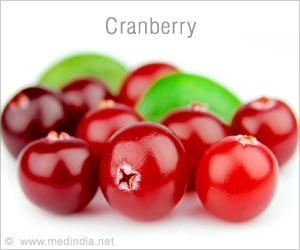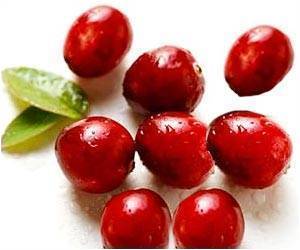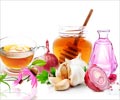Cranberry juice compresses the tiny tendrils (known as fimbriae) on the surface of the E. coli bacteria that enable it to bind tightly to the lining of the urinary tract.

‘The compounds in cranberry juice called flavonols reduced the ability of the bacteria E.coli that cause many infections including urinary tract infections.’





"With the emergence of new superbugs that are resistant to current antibiotics, our hope is to better understand the mechanisms of bacterial infection so we can identify potential new antibiotic drug targets," Camesano said. According to the U.S. Centers for Disease Control and Prevention (CDC) at least 2 million Americans are infected each year with drug-resistant bacteria, while some 23,000 die from those infections. To cause an infection, bacteria must first adhere to a host and accumulate in sufficient numbers to form a biofilm. In the new paper, the team reports that compounds in cranberry juice called flavonols greatly reduced the ability of the bacteria E.coli to stick to a surface (various strains of E. coli are responsible for many types of infections, including those of the urinary tract.)
Previous work by Camesano, Neto, and others has shown that a group of compounds called proanthocyanidins (PACs) likely play a role in cranberry juice's ability to block bacterial adhesion. In the new study, Neto's team used advanced chemical techniques to separate or "fractionate" cranberry juice into its constituent chemical compounds and characterize them. Then at WPI, Camesano's team cultured E.coli cells in samples of the fractionated juice and used an atomic force microscope to measure the bacteria's ability to bond to a surface.
"This study is the first to combine an assay-guided fractionation approach with atomic force microscopy to identify cranberry juice constituents that most strongly influence E.coli adhesion forces," the authors wrote.
After the first round of testing, samples that showed the greatest ability to reduce E. coli adhesion were further fractionated at UMass Dartmouth and then returned to WPI for testing. The process went on in similar cycles, further reducing the number of compounds in each sample, to home in on the key chemicals affecting adhesion. Those tests found that flavonols significantly reduced E.coli adhesion, both on their own, and in the presence of PACs. One particular group called flavonol galactosides showed the strongest results. "Like the PACs, we think the flavonols are part of the plant's defense system," Neto said. "They are secondary metabolites that are produced in greater concentrations when the plant is under stress or in the presence of pathogens."
Advertisement
The new data builds on previously published work, in which Camesano and her team showed that cranberry juice compresses the tiny tendrils (known as fimbriae) on the surface of the E. coli bacteria that enable it to bind tightly to the lining of the urinary tract. The change in shape greatly reduces the ability of the bacteria to stay put long enough to initiate an infection. Flavonols also are likely to affect the ability of fimbriae to bind to surfaces, but in a different way than PACs do, Camesano noted.
Advertisement
Source-Eurekalert










